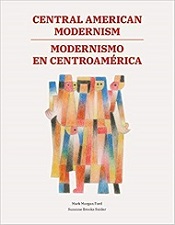My Next Big Book Project and the Problem I’m Having With My Experts

Suzanne and I are working on a sequel to Central American Modernism.It’s going to be even bigger than its predecessor because it covers more ground. The first one was on the modern period – roughly from the 1920s to the 1960s. The new book will cover contemporary artists from the 1970s to the present.
I’m excited about this project. It’s going to be important. It’s going to be fun. And it’s already giving me problems.
When we wrote Central American Modernism, we had a paucity of source materials to work with. Almost nothing in the US – even in the libraries of universities with international art studies programs. Nor was there a lot of material online. The problem was simple: Almost nobody back then cared about or thought about Central American art except Central Americans. And most of them were in Central America.
So, Suzanne and I spent about eight years and I spent more than a quarter-million dollars traveling to all six countries repeatedly. We met with museum directors, gallery owners, art critics and historians, collectors and artists – the few that were still alive. We threw parties and went to parties and ran contests and we even set up our own gallery in Nicaragua.
Like almost everything else I’ve done that I’m proud of, had I any idea what a long, demanding, and expensive slog that first book was going to be, I probably wouldn’t have done it. But I fooled myself into thinking I could do it relatively quickly and cheaply. And that got me going. Then, once I got moving, failing to finish it was not an option. To use a younger generation’s phrase, that’s how I roll. Ready. Fire. Aim.
Due to all the work we were putting into it, it began to feel like Suzanne and I were the two top experts in the world on Central American Modernism. So, when it came to making decisions about what should go in the book, I was comfortable making them.
But for the new book, I’ve enlisted help from some terrific people that know a lot more about Central American contemporary art than I do. Suzanne, of course. Also on our team is Alex Stato, who was once the director of LA’s Museum of Latin American Art.
Here’s the problem…
Both Suzanne and Alex are telling me that I have to expand my definition of art. It can’t be limited to paintings and drawings and sculptures, they say. Contemporary art must include conceptual and performance art.
I am having a tough time coming to grips with this. I understand their point. The book could be defensibly criticized for omitting these two important genres. And, in fairness, I’ve seen some conceptual/performance pieces that I thought were clever and even wonderful. But most of what I’ve seen has seemed to me to be more like a con job – a way for hucksters and their promoters to fool otherwise smart people into spending good money on silly things.
If you are not familiar with conceptual and performance art, take a look at “Good to Know,” below, and decide for yourself.
 MarkFord
MarkFord